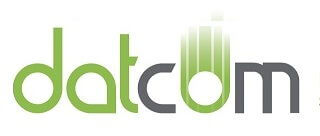Change management has long been a top-down process, but there’s a shift happening. The future of change in business is a continual process that empowers workers to be a bigger part of workplace transformation. Each worker will contribute more to optimizing systems and processes than in the past.
To get there, we must all care and contend for efficiency and effectiveness.
Feeling Good about Business Efficiency
What does it take for employees to become proactive about their own efficiency, effectiveness, and productivity?
Appreciation and recognition are key, but it’s not just about putting in a certain number of hours and getting paid. People want an opportunity to see the positive impact of their own ideas and solutions.
Without a sense that work is fulfilling and rewarding, negative attitudes about work can ripple across an entire company. Where one person or department is content to coast, the sentiment could spread. Motivation toward high performance is not likely to “go viral” in that environment.
“Quiet Quitting”
However, an idea that did go viral on social media with Gen Z workers in 2022 is the idea of “quiet quitting.”
No, they aren’t literally quitting their jobs, but they are refusing to do unpaid work. They’ve watched older generations suffer burnout and have decided to prioritize their own mental health.
So, they work to the letter of the job description and set boundaries to maintain a healthy work-life balance. But is that a great balance? As people were quick to point out: it’s not really quitting. So why talk like that? The name undermines the integrity of workers.
Would it be empowering to look back and say, “In 2022 I was a part of the ‘quiet quitter’ movement on TikTok.”
Of course not!
Everyone has times when work feels like a slog, and not the good kind that comes with a hefty end-of-year bonus. But this attitude is not an efficient use of human resources. “Quiet quitting” is just another way of saying, “flying under the radar.” And that means hidden inefficiencies that bleed money from everyone, quiet quitters included. It’s like sawing the branch you’re sitting on.
It’s not a winning mindset.
Employee sentiment is key in reducing inefficiency and should be a part of any business optimization process. Your employees see, hear, and experience everything that impacts your business. Efforts to make the workplace more engaging and enjoyable, cleaner, and safer can increase efficiency. That means a better ROI, increased quality, boosted morale, and customer satisfaction.
The Future of Change Management
The changes above are an improvement, but you will achieve greater transformation if you can rapidly deploy employees into the change process:
- Empowering employees to think like business owners
- Asking workers to give frequent and effective feedback
- Authorizing workers to improve the systems and processes they use every day
Workers may not believe they have good reasons to think about efficiency in a positive light. They have at least some distant memories of Time and Motion study. Stopwatches and Taylorism.
But that will change if companies train employees to think of themselves as co-owners.
People, processes, and tools are always premium resources, the core of any business. If the average worker thought of themselves as a premium asset for driving their own business forward, they would take better care of themselves and the other people around them as well.
Efficiency is not about squeezing human and material resources for all their worth. It’s about figuring out how things work so that you don’t waste them. That includes people. Like faulty machines, unhappy people are less efficient.
When it comes to efficiency, time is not just measured in minutes and hours, but also in potential output. A crabby, scared, or underappreciated employee is simply not going to create the same amount or level of work as a well-rested, satisfied, fulfilled person in the same span of time.
New Technologies Enabling Employee-Centric Change
In a world where work is changing rapidly, it’s critical to accept change as a constant reality. That’s why the DatCom team is passionate about using technology such as Data Processing Automation (DPA) and disciplines such as Business Process Optimization (BPO) to empower employees.
DPA is a custom software solution that business owners and managers must begin thinking about because it will change worker roles. It eliminates or transforms repetitive work by automating processes so that they are faster and less prone to errors. Then, they get to go do something else. Something more interesting and valuable.
It’s like giving your employees a promotion!
Furthermore, the potential time savings and profitability are too great to ignore, especially in a tough economy.
We’ll do a deeper dive into DPA in our next Edition of the DatCom Business Briefing. But for now, we want you to see it with your own eyes. The following video is an example of using DPA to automate accounting processes in Quickbooks.
You know what? Go share this video to “Suzy” in Accounting.
Say to her, “Hey Suzy, you’re a premium asset to this company. Tell management to set you up with this DPA stuff so you can become an even greater asset to this company!
https://youtu.be/TYvnczKj-5w
We are now using technologies such as this to transform work from a slog that is unfulfilling and unrewarding, to an adventure that sparkles with bright possibilities, for everyone.


